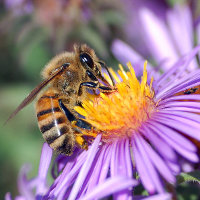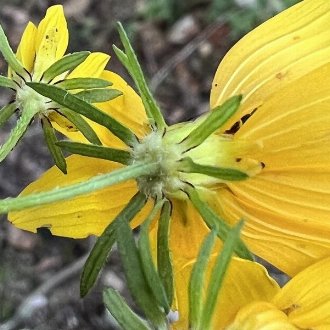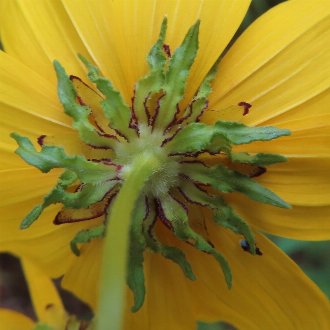Bearded Beggarticks vs Long-Bracted Tickseed Sunflower
This guide is under construction and has not been published yet. It may have errors. When in doubt, double-check other sources for definitive ID.These species are visually similar and their habitats overlap greatly. They can usually be distinguished by counting the bractlets under each flowerhead, although there is some overlap so counting multiple flowerheads may be necessary. B. aristosa originally ranged farther east, is slightly more restricted to high-light conditions, is more likely to occur in the understory of wet pine flatwoods, and is still relatively more common in the east, although due to expansion or introduction the range overlap is nearly complete. B. polylepis is slightly more tolerant of shade, and is more likely to occur in disturbed floodplains.
Bearded Beggarticks (Bidens aristosa) | Long-Bracted Tickseed Sunflower (Bidens polylepis) |
Calyculus bractlets (narrow, green leaf-like structures underneath each flowerhead) usually number 8-12, rarely up to 16. Photo © Nathan Aaron, CC BY 4.0. | Calyculus bractlets usually number 12-21, rarely more than 21. Photo © Ken Clark, CC BY 4.0. |
Additional Notes
Many authorities lump these two species together, and naming schemes are inconsistent, with some sources referring to both as B. polylepis but others referring to both as B. aristosa. Because of inconsistent treatments and the difficulties of distinguishing the two taxa, there is much unknown about both the historic and present distributions of both species.References & External Resources
These short lists show only links helpful for ID. For a complete list of references and resources also covering other aspects of ecology, visit the links section of the full article on each plant, which is the first entry here.




